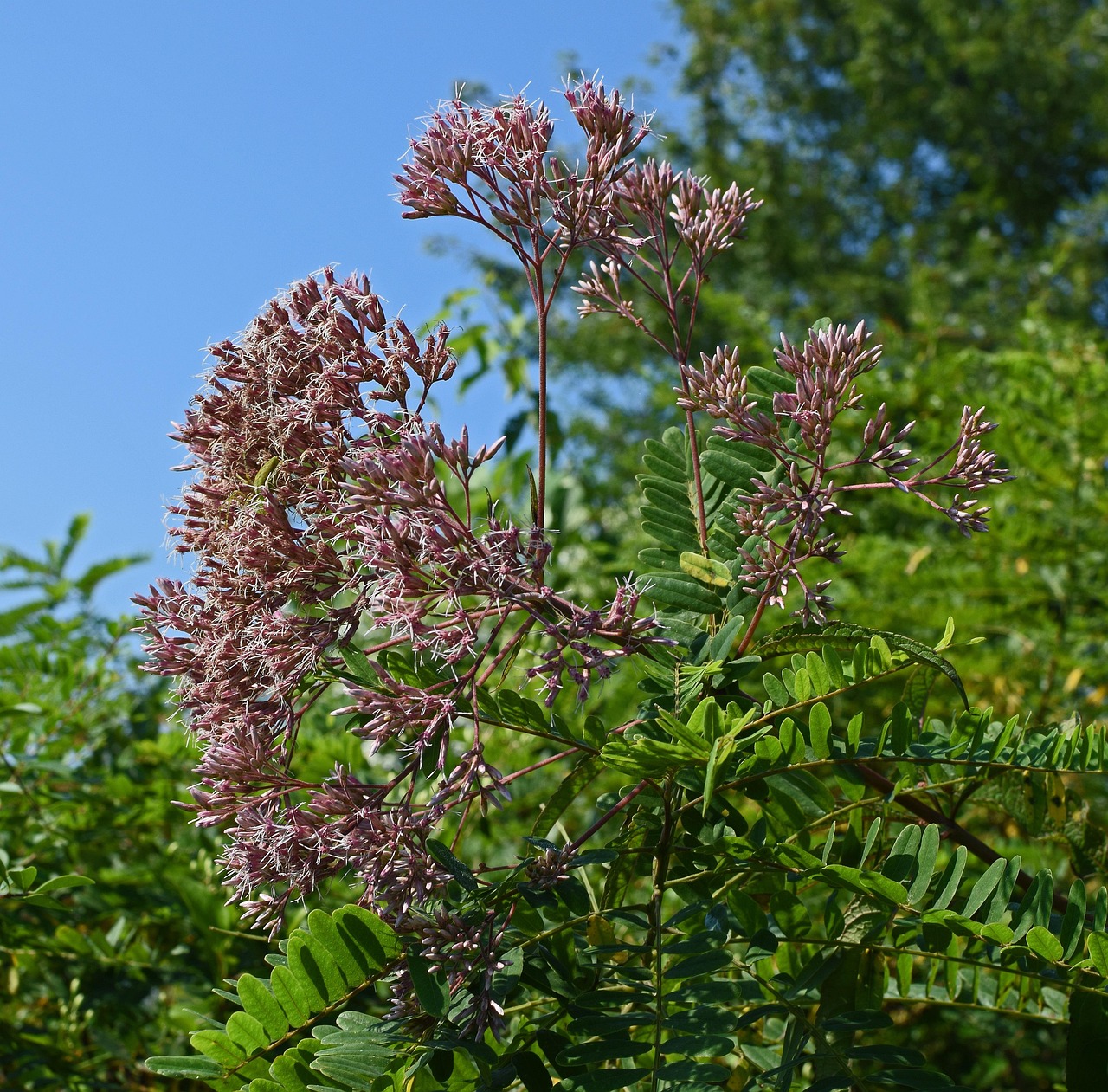
Joe Pye Weed
Eutrochium purpureum
Basic Information
🌿 Family: Asteraceae🗺️ Zone: 4-9
Other Names:
- Sweet Joe Pye Weed
- Gravel Root
- Kidney Root
🌡️ Ideal Temperature : 65°F – 75°F
🔥 Heat Tolerance: Up to 95°F
❄️ Cold Tolerance: Down to -30°F
🌱 Type: Perennial
Layers
- Sub-canopy
Companions
- Aster
- Goldenrod
- Black-eyed Susan
- Coneflower
Plants to Avoid
- None specified
Description
Joe Pye Weed is a robust, herbaceous perennial native to eastern and central North America. It typically grows between 1.5 to 2.4 meters (5 to 8 feet) tall and about 1.2 meters (4 feet) wide. The plant features upright, sturdy stems that are often green with purple spots or entirely purple. Leaves are arranged in whorls of three to five per node, each up to 30 centimeters (12 inches) long with a slightly wrinkled texture. In mid to late summer, it produces large, domed clusters of tiny, fragrant, mauve or pink-purple flowers that are highly attractive to butterflies and other pollinators.
🌞💧 Sun and Water Requirements:
Joe Pye Weed thrives in full sun to partial shade and prefers moist, well-drained soils. It is commonly found in natural habitats like moist meadows, woodland edges, and stream banks, indicating its preference for consistently moist conditions.
✂️🫘 Methods to Propagate:
Propagation can be achieved through seed sowing or division. Seeds require cold stratification and should be sown in the fall or early spring. Division is best done in early spring or late fall by separating clumps and replanting them immediately.
🧑🌾👩🌾 When to Harvest:
For medicinal purposes, roots are typically harvested in the fall after the plant has flowered. Aerial parts can be collected during the flowering period for use in teas and tinctures.
Purpose
- Medicinal: Traditionally used to treat kidney stones, urinary tract issues, and fever. The roots and aerial parts are utilized in herbal remedies.
- Pollinator: The nectar-rich flowers attract a variety of pollinators, including butterflies, bees, and other beneficial insects.
- Wildlife Attractor: Serves as a host plant for the larvae of certain moth species, contributing to local biodiversity.
- Border Plant: Its tall stature and attractive flowers make it suitable for use as a background or border plant in garden settings.